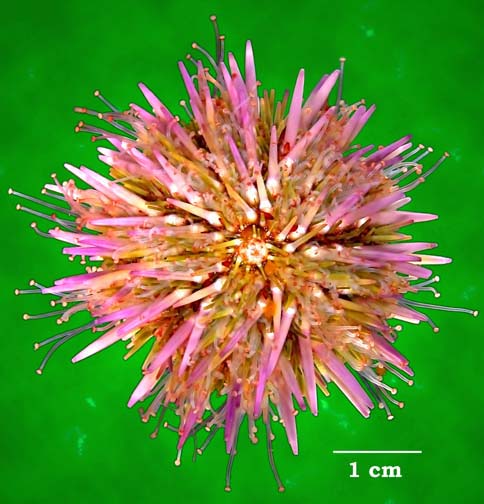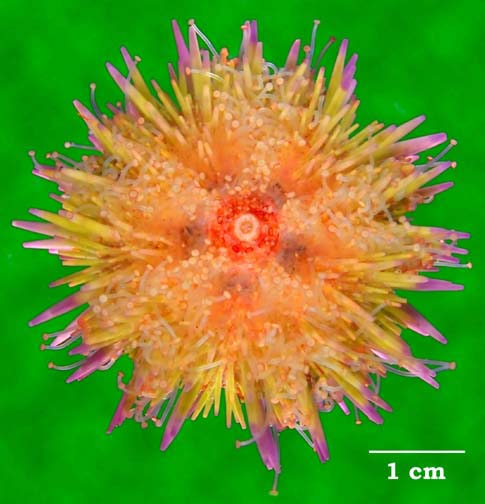Strongylocentrotus purpuratus (Stimpson, 1857)
Found from western Canada south to Baja California, this species is one of the best-known sea urchins in the world. Often used in laboratories for developmental and physiological experiments, in the wild it contributes equally importantly to the ecology of the California coast. The delicate balance between sea urchin numbers, kelp forest growth, and predation on the urchins by sea otters has been the subject of study for many years. When predators like the sea otters are removed (usually through the activities of humans), sea urchin populations increase to the point where entire kelp forests can be eaten down to the rock, forming "urchin barrens". S. purpuratus is also common at the low tide line on rocky shores, often living in protective cups and cavities in the rock that the growing urchins enlarge with their teeth and spines. This specimen, collected in the Bay at Treasure Island, represents an intermediate stage between the bright green young and the more characteristic purple hue of mature S. purpuratus. It also displays the sucker-tipped, extremely extensible tube feet. The upper photo depicts the top of the animal, and the lower photo shows the bottom. In the center of the bottom view is the mouth, inside which is the Aristotle's lantern -- the 5-toothed jaw apparatus that the urchin uses to scrape rocks and chew algae. The Academy's collections have representatives of this urchin from more marine environments near the entrance to San Francisco Bay, but sea urchins are seldom, if ever encountered as far into the Bay as this one. Although S. purpuratus can tolerate salinities from 80% to 110% of normal ocean levels, finding this animal at Treasure Island remains an indicator of just how little fresh water is flowing into the Bay. Because the age of this specimen is likely greater than one year, it would also seem that marine conditions in this part of the Bay have persisted even during our rainiest winter months of the past year or more.


